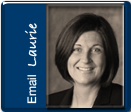Originally posted December 26, 2011
Michigan held out...they protected people collecting pensions for as long as possible. But the tax breaks are over, as Michigan follows suit with many other states in the nation by taxing pensions. It all begins January 1, 2012. Not all retirees with pension income are affected. However, if your pension income is subject to Michigan tax, under the new rules, you will need to withhold Michigan tax in the amount of 4.35%.
Here’s how the new law may affect you --
1. IF YOU WERE BORN BEFORE 1946
No change in current law
- Social Security is exempt
- Senior citizen subtraction for interest, dividends and capital gains is unchanged
- Public pension is exempt
- For 2012 private pensions subtract up to $47,309 for single filers and $94,618 for joint filers.
What will happen: No Michigan tax is withheld from pension payments unless you request it.
2. IF YOU WERE BORN BETWEEN 1946 AND 1952
Before the taxpayer reaches age 67
- Social Security is exempt
- Railroad and Military pensions are exempt
- Not eligible for the senior citizen subtraction for interest, dividends and capital gains.
- Public and private pension limited subtraction of $20,000 for single filers or $40,000 for joint filers.
After the taxpayer reaches age 67 (**Will first occur in 2013**)
- Social Security is exempt
- Railroad and Military pensions are exempt (but see below)
- Not eligible for senior citizen subtraction for interest, dividends and capital gains
- Subtraction against all income of $20,000 for single filers and $40,000 for joint filers.
- Not eligible for this income subtraction if choosing to claim a military or railroad pension exemption.
What will happen: Michigan tax will be withheld from your January 2012 pension payment based on the number of exemptions you requested for your federal income tax.
TAXPAYER EXAMPLE:
Tom and Nancy Jones are a married couple. Tom was born in 1947, is retired and collects social security and a pension. Nancy was born in 1951, and is still working.
Tom’s Pension = $30,000
Tom’s Social Security = $20,000
Nancy’s wages = $40,000
Will the Jones' be subject to pension tax in this scenario?
Not under current tax law
- Pension subtraction = $30,000
- No withholding necessary on pension
- Social security is exempt
3. IF YOU WERE BORN AFTER 1952
Your pension will be subject to Michigan income tax until you reach age 67.
Before the taxpayer reaches age 67
- Social Security is exempt
- Railroad and military pensions are exempt
- Not eligible for the senior citizen subtraction for interest, dividends and capital gains
- Not eligible for public or private pension subtraction
After taxpayer reaches age 67 (**Will first occur in 2020)
- Not eligible for senior citizen subtraction for interest, dividends and capital gains
- Not eligible for public or private pension subtraction
- Income exemption election:
- ELECT exemption against all income of $20,000 for single filers or $40,000 for joint filers
- No exemption for Social Security, military or railroad retirement
- No personal exemptions
**OR**
- ELECT to exempt Social Security, military and railroad pension. May claim personal exemptions.
What will happen: Michigan tax will be withheld from your January 2012 pension payment based on the number of exemptions you requested for your federal income tax.
As always, our advice is to work with your professional advisors if you have any questions about the tax law changes and your pension income. Laurie.Renchik@Centerfinplan.com or Julie.Hall@Centerfinplan.com
Note: Changes in tax laws may occur at any time and could have a substantial impact upon each person’s situation. While we are familiar with the tax provisions of the issues presented herein, as Financial Advisors with RJFS, we are not qualified to render advice on tax matters. You should discuss tax matters with the appropriate professional.
Source: www.michigan.gov
 Center Planner Matt Chope recently traveled to Texas to attend a Raymond James Regional Conference. Matt returned with a full plate of ideas and information to share with Center team members. According to him, “Attending the conference gave me a chance to sit with industry experts for 3 days and learn about the latest nuances in many areas of financial planning for 2012.”
Center Planner Matt Chope recently traveled to Texas to attend a Raymond James Regional Conference. Matt returned with a full plate of ideas and information to share with Center team members. According to him, “Attending the conference gave me a chance to sit with industry experts for 3 days and learn about the latest nuances in many areas of financial planning for 2012.”








